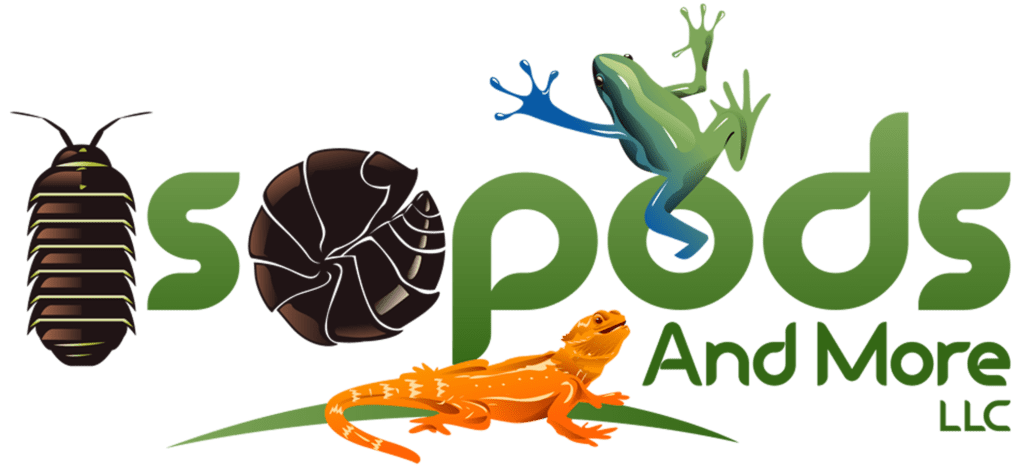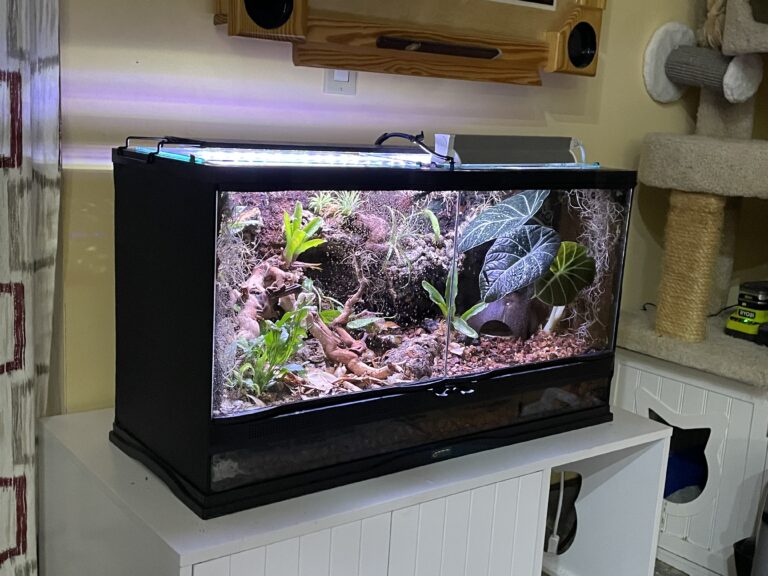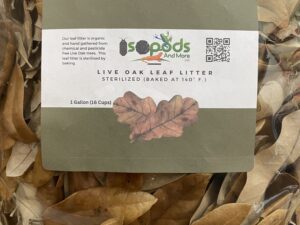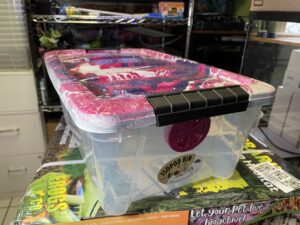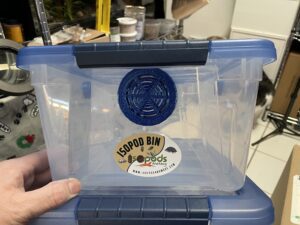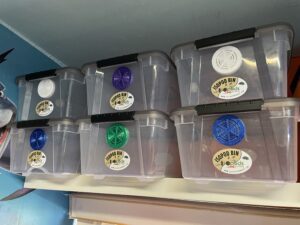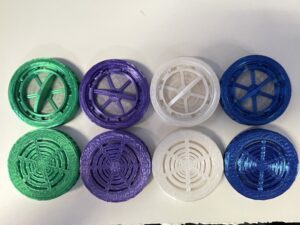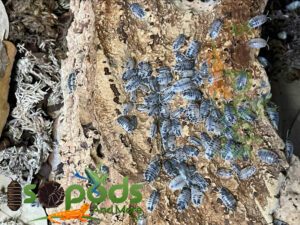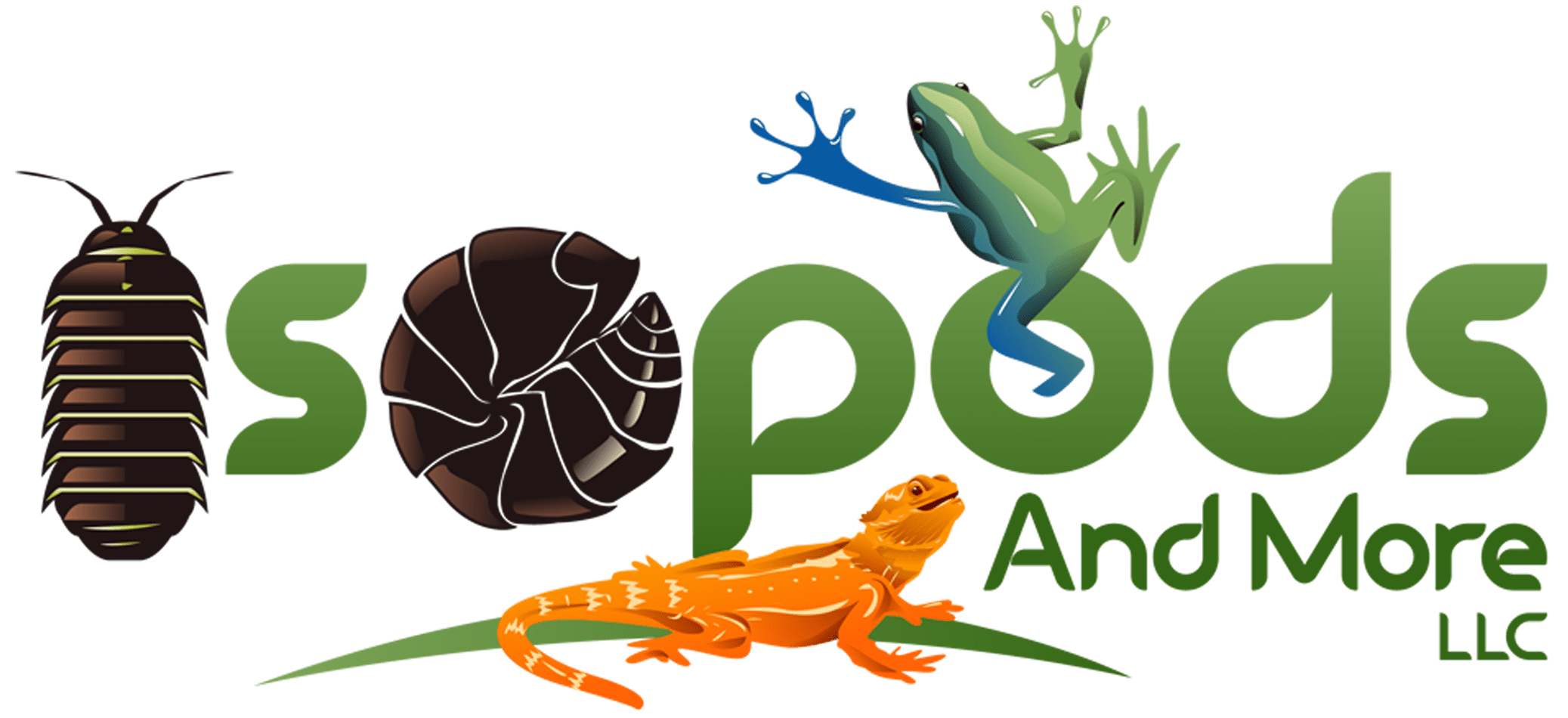Poison dart frogs, with their vivid colors and complex behaviors, offer a glimpse into the rich tapestry of tropical ecosystems. Captive-bred for their safety, these frogs bring the mystery of the rainforest into your home without the risk of toxins present in their wild counterparts[1][2]. Providing dart frog enrichment starts by designing a thriving habitat for poison dart frogs that not only supports their health but transforms their space into a vibrant slice of Central and South America’s lush environments[2][3].
Ensuring the habitat quality of your poison dart frog enclosure involves more than basic care; it’s about creating an ecosystem that mirrors their natural poison dart frogs habitat. From incorporating the right feed like fruit flies to understanding the nuances of diurnal activity, every element of care is crucial for their well-being and longevity[1][2]. This guide will navigate through the essentials of crafting a dynamic living space that promotes a rich, fulfilling life for your dart frogs.
Understanding Dart Frog Needs
Essential Habitat Requirements
- Space and Cohabitation: Adult poison dart frogs require a minimum of 10 gallons of space per frog, and it’s advised to house only one species or subspecies per enclosure to prevent conflicts[2].
- Temperature and Humidity: Maintain a temperature range of 72 to 80 degrees Fahrenheit and a humidity level between 70-100%, ensuring it never drops below 50%[1][3]. Use thermo-hygrometers to monitor these conditions[1][8].
- Dietary Needs: Feed adult dart frogs four times a week and juveniles daily. Their diet should consist of small, live insects like flightless fruit flies and should be dusted with a high-quality calcium and vitamin supplement before feeding[2][3].
Health and Maintenance
- Supplementation: Use supplements such as Repashy Calcium Plus, Repashy SuperPig, and Repashy Vitamin A+ to ensure optimal health[2].
- Regular Care: Check temperature and humidity daily, maintain humidity levels, and promptly remove droppings. Minimize handling to protect their delicate skin[1][6].
- Veterinary Care: Regularly consult with a veterinarian for health assessments and if any issues are observed[9].
Behavioral and Environmental Enrichment
- Hiding and Climbing: Provide ample hiding spots and climbing structures to mimic their natural environment, which helps reduce stress and allows them to engage in natural behaviors[11][12].
- Avoid Handling: Limit handling to an absolute minimum as these frogs have very delicate skin and do not tolerate frequent physical contact[1][8].
By understanding and implementing these specific needs, you can create a thriving environment for your poison dart frogs, ensuring their health and longevity in captivity.
Designing the Enclosure
Choosing the Right Enclosure
To begin crafting the perfect home for your poison dart frogs, selecting an appropriate enclosure is paramount. A 20-gallon high aquarium or larger is recommended for beginners, providing ample space for the frogs to thrive[16]. Opt for a waterproof enclosure with hinged glass covers to maintain humidity while allowing easy access for maintenance[16]. Ensure the enclosure includes adequate ventilation, but avoid excessive airflow that could dry out the habitat[15].
Building the Habitat Foundation
Establishing the Plumbing
Initiate your enclosure setup by installing a drainage system to prevent waterlogging, crucial for maintaining a healthy environment. Utilize lightweight expanded clay aggregate (LECA) at the base, covered by a fiberglass window screen to separate the drainage from the substrate layer[16].
Layering the Substrate
Choose a substrate that retains moisture yet prevents fungal growth. Avoid using regular potting soil; instead, opt for specialty terrarium substrates or create your own mix. Top the substrate with leaf litter to enhance the aesthetic while providing hiding spots for the frogs and supporting beneficial microorganisms[16].
Temperature and Humidity Control
Maintain the enclosure’s temperature between 72-80°F during the day, allowing a drop to as low as 65°F at night[2]. Use a heat pad connected to a thermostat to manage these conditions effectively, ensuring it’s not placed under the enclosure if live plants are used[2]. The humidity should consistently stay between 80-100%, achieved by misting the enclosure twice daily or using an automatic system[2].
Lighting and Background
Install lighting that not only illuminates the enclosure but also supports plant growth. Fluorescent bulbs with a color temperature around 5,500 Kelvin will simulate natural sunlight, promoting a healthy growth environment for terrarium plants[16]. Enhance the enclosure’s depth and complexity by attaching naturalistic backgrounds like cork bark or coco-fiber sheets, using aquarium-safe silicone sealant for secure placement[16].
Final Touches: Landscaping and Decoration
Create a visually engaging and functional environment with central structures made from driftwood or cork bark. Integrate rocks, vines, and other natural elements to mimic the dart frogs’ natural habitat. Ensure all materials used are suitable for high-humidity conditions[16]. Incorporate live plants, which are vital for the ecosystem’s health, ensuring they are thoroughly cleaned and properly secured within the enclosure[16].
By meticulously designing your poison dart frog’s enclosure with these elements, you set the stage for a vibrant, thriving ecosystem that mirrors the lush rainforests these captivating creatures call home.
Essential Elements for Dart Frog Enclosures
Plant Choices and Lighting
- Optimal Plant Selection: Incorporate plants like Pitcher Plants and Peace Lilies to control insect populations and improve air quality within the enclosure. Pitcher Plants thrive in high humidity and bright, indirect light, while Peace Lilies can endure lower light conditions[20][4].
- Lighting Considerations: Although poison dart frogs do not require special lighting, the type of lighting used significantly impacts the health of the terrarium plants and the overall aesthetic. Use high-output lighting such as the Bio Dude Glow & Grow LED for plant growth, and consider UVB lighting like Zoo Med T5 HO Reptisun 5.0 or Arcadia Forest 6% to ensure the frogs’ optimal health[16][2][3].
Water and Humidity Management
- Water Features: Include standing water areas essential for tadpole transportation and survival. Tannins can be added to improve water quality and mimic natural conditions[15].
- Humidity Control: Maintain high humidity crucial for dart frogs by using devices like thermo-hygrometers. High-output lighting may require the integration of cooling fans to manage enclosure temperatures[1][8][5].
Substrate and Bioactive Setup
- Substrate Layers: Use a non-organic substrate like natural aquarium gravel to avoid fungal growth. A drainage layer is crucial to prevent water stagnation and bacterial growth[1][3].
- Bioactive Components: Establish a bioactive setup with beneficial organisms such as dwarf and larger isopod species along with tropical springtails. This setup promotes natural behaviors and reduces maintenance needs[3][6].
Nutritional Considerations
- Feeding Practices: Ensure a varied diet by culturing fruit flies at home, providing a steady and cost-effective food source. Supplement the diet with vitamins and minerals, including calcium and vitamin D3, to support health and breeding[3][19].
- Water Quality: Use products like Exo Terra® Aquatize to treat tap water, removing harmful substances and ensuring the water is safe for the frogs[19].
By integrating these essential elements into your dart frog enclosure, you create a dynamic and healthy environment that supports the well-being and natural behaviors of your poison dart frogs.
Creating Hiding and Climbing Structures
Variety and Security in Hiding Structures
- Basic Setup: Start by introducing leaf litter, seed pods, and moss, which provide natural hiding spots and enhance the enclosure’s aesthetics[2].
- Specialized Hiding Spots: Incorporate mopani wood, cork bark, and rocks, which not only offer security but also mimic the natural environment of the poison dart frogs[2].
- Safety and Comfort: Ensure all hiding structures like caves or hollowed-out logs are smooth-edged and securely attached to prevent any injuries[11].
Climbing Structures for Exercise and Exploration
- Building Vertical Complexity: Utilize branches, driftwood, and frog ladders to create varied levels within the tank, allowing your dart frogs to climb and explore, which is vital for their physical health and mental stimulation[11].
- Material Safety: Treat all natural materials with a reptile-safe disinfectant to prevent the introduction of harmful pathogens[11].
- Stability and Maintenance: Check the climbing structures regularly for signs of wear or damage and ensure they are sturdy enough to support the active dart frogs[11].
Enhancing Enclosure Aesthetics and Functionality
- Visual Appeal and Utility: Use artificial plants to add color and structure to the habitat, ensuring they are non-toxic and safe for the frogs[11].
- Natural Environment Simulation: Integrate live plants like bromeliads, pothos, and ferns, which provide additional hiding spots and contribute to the overall health of the habitat[10].
- Proper Sizing: Tailor the number and size of both hiding and climbing structures to the number and size of frogs, ensuring each frog has its own space to retreat[10].
Choosing the Right Plants
Ideal Plant Choices for Poison Dart Frog Enclosures
- Bromeliads: Opt for Bromeliads from theNeoregelia genus, which are true epiphytes flourishing in high humidity and bright, indirect light conditions[22].
- Philodendrons: These are rapid growers and thrive under various lighting conditions, exhibiting enhanced color and growth with increased light[22].
- Peperomia: Perfect for terrarium settings, Peperomia species prefer low to medium light, showing more compact growth in slightly brighter conditions[22].
- Pilea Varieties: With numerous species available, small-leaf vining Pileas are easy to propagate and maintain within the enclosure[22].
- Orchids: Jewel orchids likeLudisia discolor andMacodes petola are recommended for their stunning foliage and adaptability to low light environments[22].
- Ferns: Ideal for areas with low light and high humidity, some ferns feature visually striking rhizomes adding to the aesthetic appeal of the habitat[22].
Selecting Beginner-Friendly Plants
- Pozos and Chinese Evergreen: Known for their ease of care and robustness in various conditions.
- Monstera (Swiss Cheese Plant): Adds a dramatic touch with its distinctive leaf patterns.
- Christmas Moss and Watermelon Vine: Provide lush greenery and ground cover.
- Oak Leaf Creeping Fig and Philodendron Wendlandii: Excellent for creating a dense, jungle-like feel.
- Micro Coulomb Epiphytic Fern and Jewel Orchid (Blue Diamond): Enhance the enclosure with unique textures and colors.
- Jus Orchid (Mccoy Des Patola): Offers a striking visual with minimal care requirements[23].
Preparation and Care Tips
- Plant Establishment: Allow your terrarium to mature for several weeks before introducing poison dart frogs. This period helps plants establish themselves and adapt to the humid conditions, ensuring a stable environment for your frogs[16].
- Safe and Organic Options: Consider purchasing plants from suppliers like Josh’s Frogs, known for their commitment to organic growth and safety, ensuring the plants are free from harmful pesticides and safe for your dart frogs[22].
By carefully selecting and preparing the right plants, you not only enhance the visual appeal of your poison dart frog enclosure but also contribute to a healthy and stimulating environment for your pets.
Conclusion
This guide has delineated the comprehensive aspects required to establish a flourishing habitat for poison dart frogs, emphasizing the significance of enclosure design, temperature and humidity regulation, dietary needs, and the provision of a bioactive ecosystem. The journey through creating an ideal environment showcases the balance between aesthetic appeal and functional necessity, ultimately ensuring the health, longevity, and well-being of these vibrant amphibians. By mirroring their natural habitat as closely as possible, enthusiasts can transform their space into a captivating spectacle that echoes the lush vibrancy of Central and South America’s rainforests.
Reflecting on the broader implications, this article not only serves as a manual for aspiring and seasoned poison dart frog caretakers but also underscores the importance of conscientious pet ownership and environmental stewardship. It suggests further exploration and continuous learning in the realms of amphibian care, highlighting the pivotal role of each individual in preserving the delicate balance of our planet’s ecosystems. Through the careful application of these guidelines, readers are equipped to embark on a rewarding journey of nurturing these fascinating creatures, contributing to the conservation of biodiversity in their own unique way.
FAQs
What are the essential requirements for a poison dart frog’s habitat?
To ensure a suitable environment for poison dart frogs, maintain a temperature range between 65°F and 80°F, with an ideal range in the low to mid-70s. Avoid temperatures exceeding 85°F as they can be harmful. These frogs thrive in high humidity levels, ideally between 80-100%, but they can endure humidity as low as 50% for brief periods, provided they have access to water.
How can we contribute to the well-being of poison dart frogs?
Many poison dart frog species face threats due to habitat destruction and excessive collection for the pet trade. You can aid in their conservation by making informed decisions when purchasing souvenirs during travel. Always inquire about the origin of items and refrain from supporting vendors who offer products derived from endangered or threatened wildlife.
What are the requirements for setting up a dart frog enclosure?
For a suitable poison dart frog enclosure, a space approximately 12 inches in width and length is recommended. Utilize a moist substrate, such as long-fiber sphagnum moss, and provide leaves for hiding spots. Initially, house one to two poison dart frogs in this enclosure size, ensuring they are comfortably settled, feeding properly, and growing before considering any changes.
Is a bioactive enclosure necessary for dart frogs?
Yes, a bioactive enclosure is crucial for maintaining the high humidity levels required by dart frogs, making it an integral component of their successful care.
References
[1] –https://reptilesmagazine.com/poison-dart-frog-care-sheet/
[2] –https://reptilesupply.com/blogs/frog-care-sheets/how-to-care-for-poison-dart-frogs
[3] –https://www.thebiodude.com/blogs/reptile-and-amphibian-caresheets-with-cited-veterinary-and-herpetology-sources/keeping-poison-dart-frogs-as-pets-and-bioactive-terrarium-maintenance
[4] –https://www.dendroboard.com/threads/dart-frog-plant-preferences.359904/
[5] –https://www.reddit.com/r/DartFrog/comments/ccsfle/what_do_i_need_to_start_a_dart_frog_vivarium/
[6] –https://froggyinsights.com/poison-dart-frog-setup-the-ultimate-guide/
[7] –https://www.dendroboard.com/threads/so-ive-figured-out-my-vivarium-isnt-good-for-dart-frogs-now-what.363496/
[8] –https://www.saczoo.org/poison-dart-frog
[9] –https://azeah.com/frogs/basic-care-poison-dart-frogs
[10] –https://www.reptileforums.co.uk/threads/the-how-to-build-a-dart-frog-viv-thread.723034/
[11] –https://www.dendroboard.com/threads/looking-for-ideas-on-adding-more-climbing-space.360969/
[12] –http://bamboozoo.weebly.com/how-to-build-a-dart-frog-viv.html
[13] –https://www.dartden.com/thread-6469.html
[14] –https://nationalzoo.si.edu/animals/poison-frogs
[15] –http://www.exoticpetvet.com/dart-frog-care.html
[16] –https://reptilesmagazine.com/how-to-build-a-poison-frog-terrarium/
[17] –https://www.youtube.com/watch?v=KmylrAvkFO0
[18] –https://m.youtube.com/watch?v=XTcFILZsJsw
[19] –https://exo-terra.com/explore/care-guides/frogs-toads/dendrobates-auratus/
[20] –https://www.dendroboard.com/threads/good-starting-plant-for-poison-dart-frog-tank.228289/
[21] –https://www.thebiodude.com/collections/plants-for-frogs-and-salamanders-tropical-and-desert/plant
[22] –https://joshsfrogs.com/blog/terrarium-plants-101
[23] –https://www.youtube.com/watch?v=CvspqXTxk6Y
[24] –https://joshsfrogs.com/blog/so-you-think-you-want-dart-frogs
